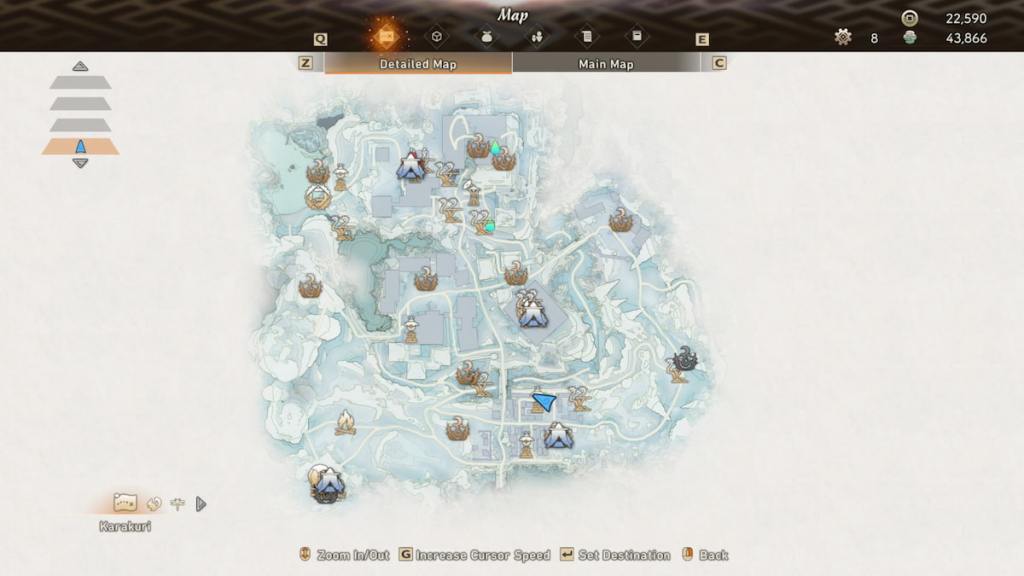Wild Hearts is a game full of unexplained moving parts. Part of this is likely intended, but there are portions of the game that there is no real reason to not have an explanation for. One such piece of the puzzle is the map. Where is the legend? Just what do all those symbols really mean? If you found yourself asking these questions, then you've come to the right place for the answers. Here's what all of the icons on the map mean in Wild Hearts.
Wild Hearts - Map Icons, Explained
Wild Hearts has two completely different maps that we need to cover. For the sake of clarity, we'll be separating both maps under their own sections. This way, referencing this article becomes a trivial task, and you can find exactly what you need without having to search through swabs of text. Let us begin with the Main Map in Wild Hearts.
Wild Hearts - Main Map, Explained

The Main Map does not have a lot of symbols on it, making it relatively easy to read. However, without context, there may still be an issue. Here are the main map icons:
- Blue Tent Icon - This icon represents entry points into the major areas in Wild Hearts. As mentioned, you cannot enter an area without entering through this icon.
- Beastial Face Icons - These icons vary in shape, but they all represent a specific type of Kemono monster. Hover your cursor over them to see which monster each represents.
- Unrolling Scroll Icon - These icons represent side quests obtained from the hub, Minato.
- Yellow Diamond Icon - This icon provides you direction toward the game's main storyline. It appears above what you need to do next to proceed.
- Orange Dot Icon - This icon appears over items or content you have yet to experience. These can appear over Beastial Face icons and Unrolling Scroll Icons.
Wild Hearts - Detailed Map, Explained

This map is the one that's more confusing, as there is a lot more going on here than the main map. You'll be spending most of your time looking here, so it's important you understand what each icon means:
- Blue Tent Icon - Represents camps within the area. You can place these anywhere on the map and use them to fast travel across it, provided you have the capacity to do so.
- Beastial Face Icons - Much like the same icons on the Main map, these represent the actual beasts. The difference is that the beasts on this map are in their exact location, and you can see them moving in real time.
- Map with "X" drawn on it - Filter that shows active Karakuri on the map
- Squirrel-like Icon - Filter that shows active small Kemono on the map
- Brown, Circle Dot - These are active small Kemono. Can see them moving in real time
- Lantern Icon - Represents Tsukumo Lanterns you've placed on the map
- Slingshot-like Icon - Represents Flying Vine and Enhanced Flying Vine Karakuri you've placed on the map
- Gray Bonfire-like Icon - Represents Dragon Pits you have yet to claim
- Red Bonfire-like Icon - Represents Dragon Pits you've already claimed
- Cyan Tear Drop Icon - Represents Healing Wells you can claim/have claimed
- Mosquito Icon - Filter that represents small creatures you can collect
- Gray, Circle Dot - These are active small creatures. Can see them moving in real time
- Turnip Icon - Filter that represents materials on the map
- Green Dot Icon - Represents the actual materials on the map
- Tower Icon - Represents Hunting Towers you've already placed
For more quality content related to Wild Hearts, check out our guide on How to get Mirror Stone in Wild Hearts right here on Pro Game Guides.